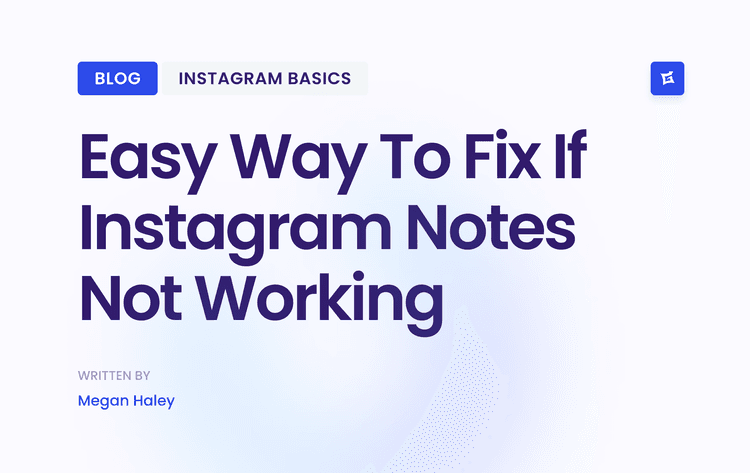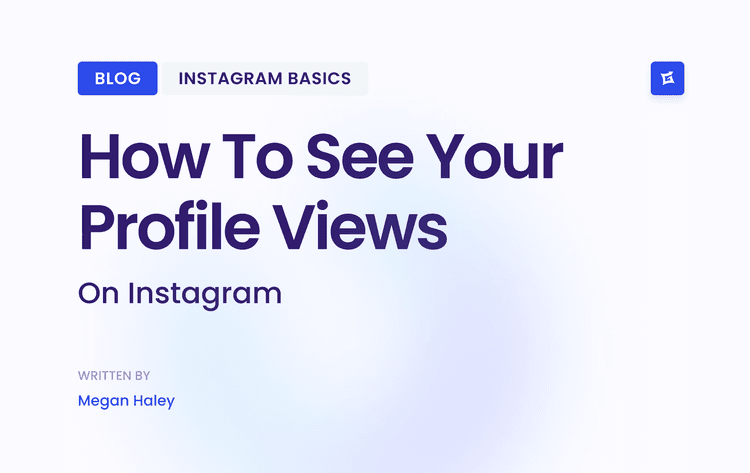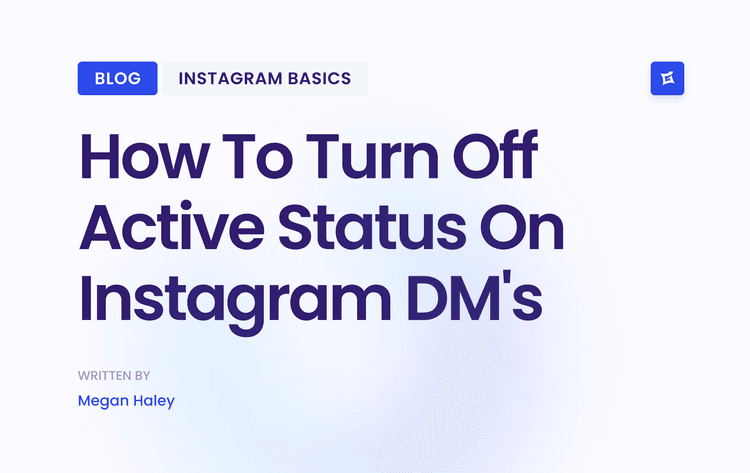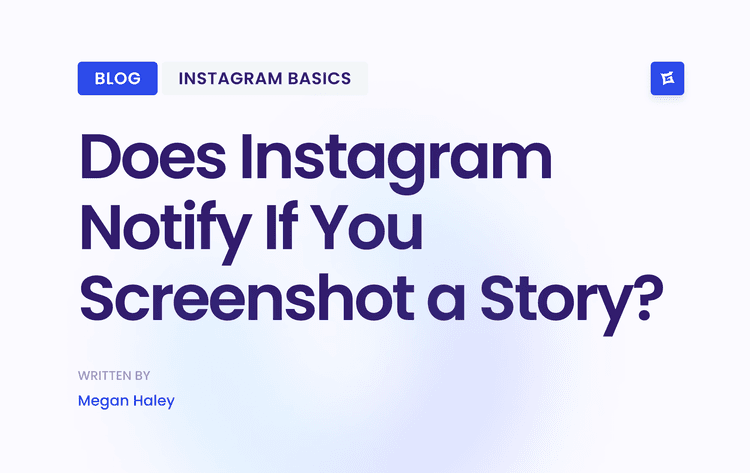A Simple Guide to Decoding Social Media Impressions
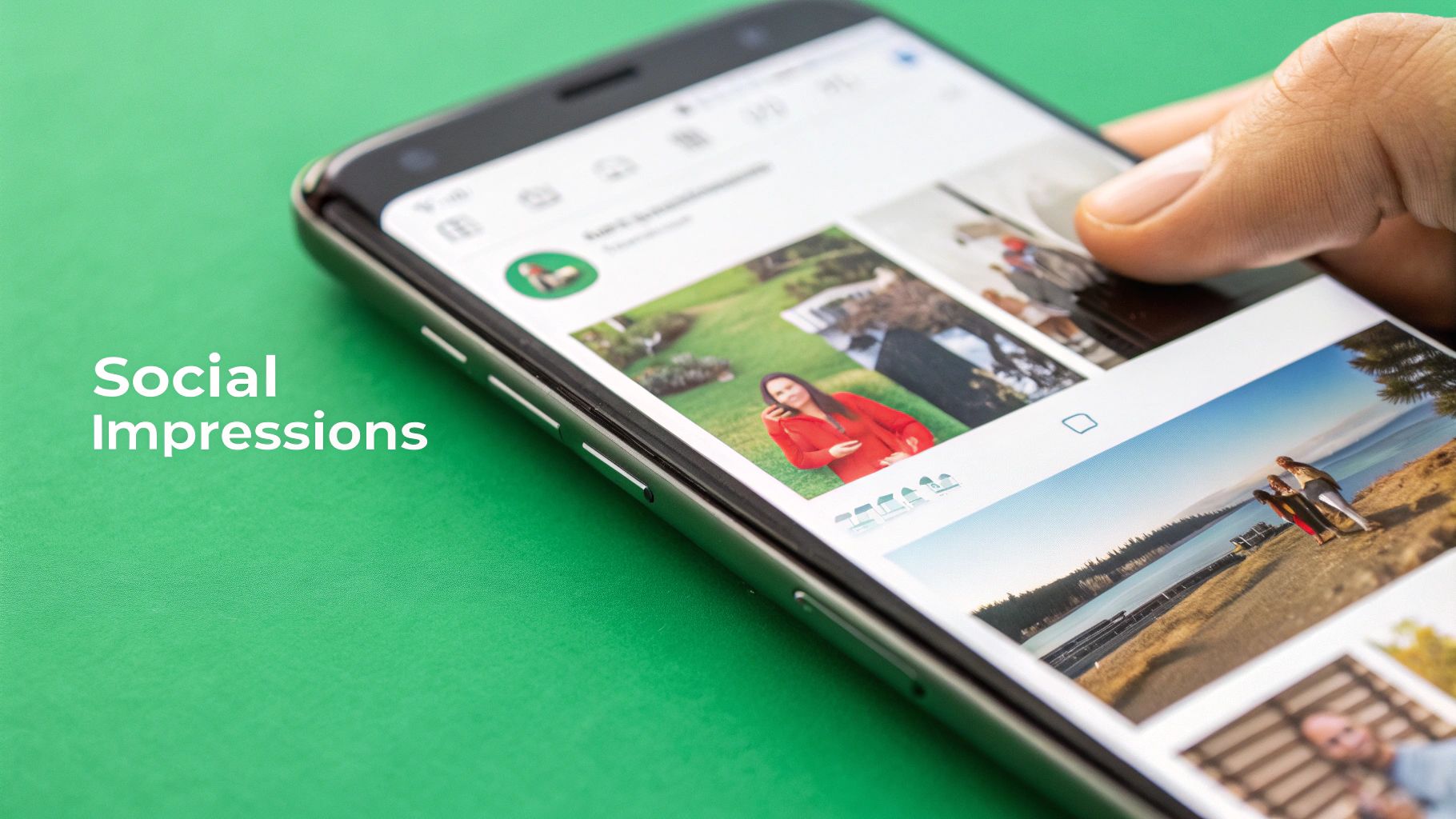
Think of it like a digital billboard on a busy highway. Every single car that drives by and has the opportunity to see your ad counts as one impression. It doesn't matter if the driver was paying attention, looking at their phone, or had already driven that same route three times that day. Each pass is a new impression.
This is the most important takeaway: one person can be responsible for multiple impressions on the same post. For instance, if you see a cool new product in your feed in the morning and then see it again when a friend shares it later that day, you've just generated two impressions for that brand.
> Impressions are all about visibility and opportunity. They show you how many chances your content had to be seen, which is the absolute first step toward building awareness and getting results.
Grasping the concept of social media impressions is fundamental because it's a direct measure of your content's visibility. While different platforms may have slight differences in their calculations, the core idea remains universal. For a deeper dive into how this works on a professional platform, the guide "What Are Impressions on LinkedIn?" is a great resource.
Impressions At a Glance
To nail this down, let’s quickly summarize what an impression is and isn't. This list breaks the concept into its key components.
Measurement Unit:
An impression is measured as a single instance of a piece of content being displayed.User Interaction:
Interaction is not required for a view to be counted. A view is recorded even without any clicks, likes, or shares.Uniqueness:
Impressions are non-unique, meaning the same user can generate multiple impressions.Primary Goal:
The main goal of measuring impressions is to assess the total visibility or exposure of a post.
Ultimately, impressions are your starting point for understanding how far and wide your message is spreading across social media.
The Critical Difference: Impressions vs. Reach vs. Engagement
Diving into social media analytics can feel a bit like learning a new language. You'll constantly hear terms like impressions, reach, and engagement, and while they sound similar, they tell very different stories about your content's performance. Getting them straight is the first step to truly understanding what's working.
Let’s use a simple analogy. Imagine you've put up a billboard on a busy highway to advertise a new coffee shop.
Impressions are the total number of times your billboard is seen. If 1,000 cars drive by, and some of those drivers pass it on their morning and evening commutes, you might rack up 2,000 impressions. It's a raw count of every single view, regardless of who's doing the viewing.
This is all about total visibility—how many times your content appeared on a screen.
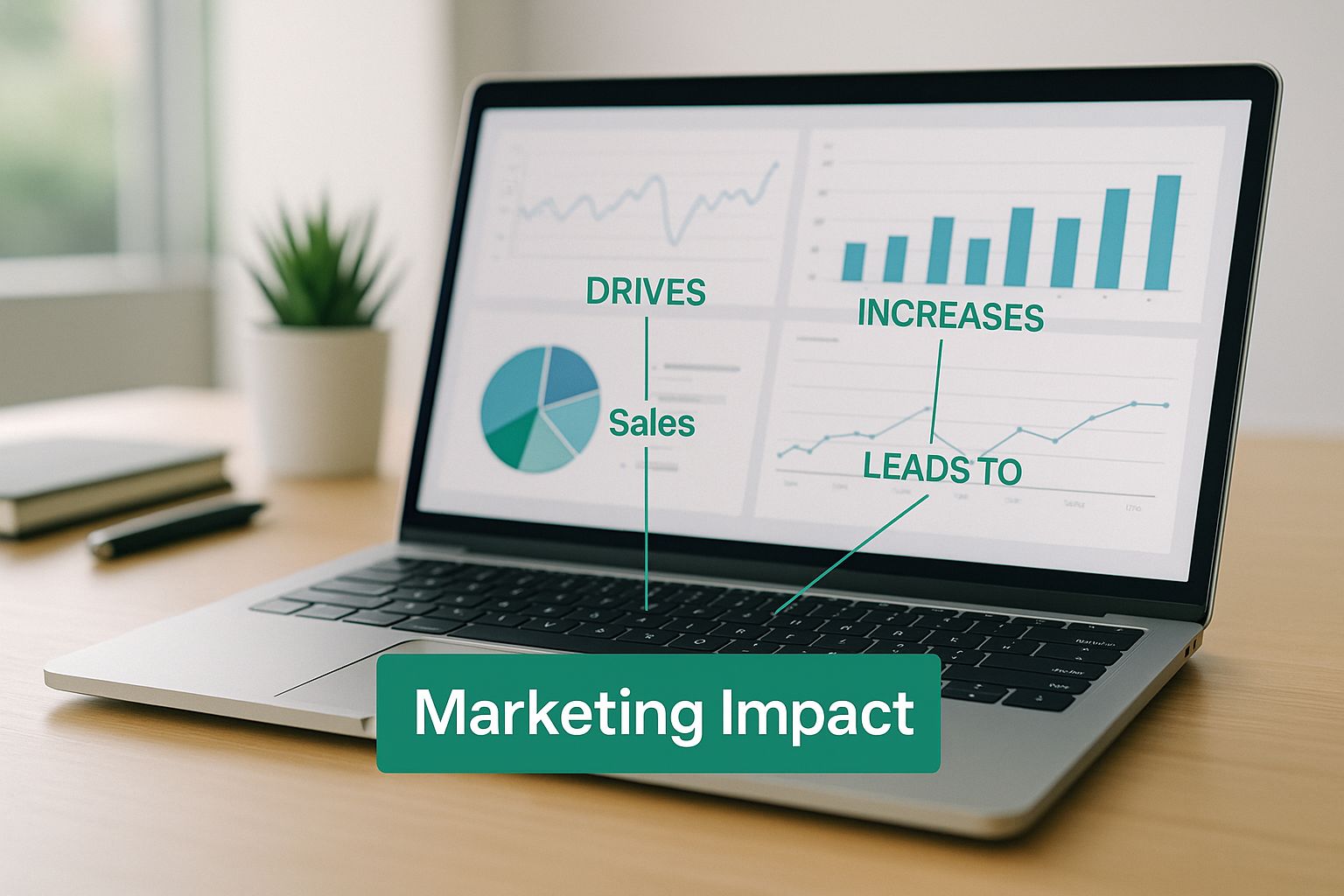
As you can see, impressions are just one piece of the puzzle. They're a great starting point, but they don't give you the full picture on their own.
How Reach and Engagement Fit In
Now, let's bring the other two key metrics into our billboard analogy.
Reach tells you how many unique people saw your billboard. So, even if those 1,000 cars generated 2,000 impressions, your reach is only 1,000. This metric isn't about the total number of views; it's about the unique size of your audience.
Engagement is what happens when someone acts because of your billboard. They might take the exit to visit your coffee shop, look up your brand on their phone, or tell a friend about it. In the social media world, engagement is any active interaction: a like, comment, share, save, or click. It's the clearest sign that your content connected with someone.
> Think of it this way: You might have 5,000 impressions from 1,000 unique people (reach), which leads to 150 likes and comments (engagement). Each number tells a distinct part of your performance story.
To make this crystal clear, here’s a quick breakdown of how these three metrics compare side-by-side.
Impressions vs. Reach vs. Engagement Comparison
Impressions
Measures: The total number of times your content is displayed
Example: If your tweet appears 500 times (including multiple views by the same users), you have 500 impressions
Reach
Measures: The number of unique accounts that saw your content
Example: If 350 different people saw your tweet, your reach is 350
Engagement
Measures: All interactions with your post (likes, shares, comments, etc.)
Example: A tweet with 25 likes, 5 retweets, and 2 replies has 32 total engagements
Understanding this trio is fundamental. High impressions but low reach could mean a small, loyal group sees your content over and over. High reach with low engagement might signal that you're getting in front of people, but your message isn't compelling enough to make them act. Analyzing how these metrics play off each other is where real strategy begins.
Why Tracking Impressions Is Crucial for Your Brand
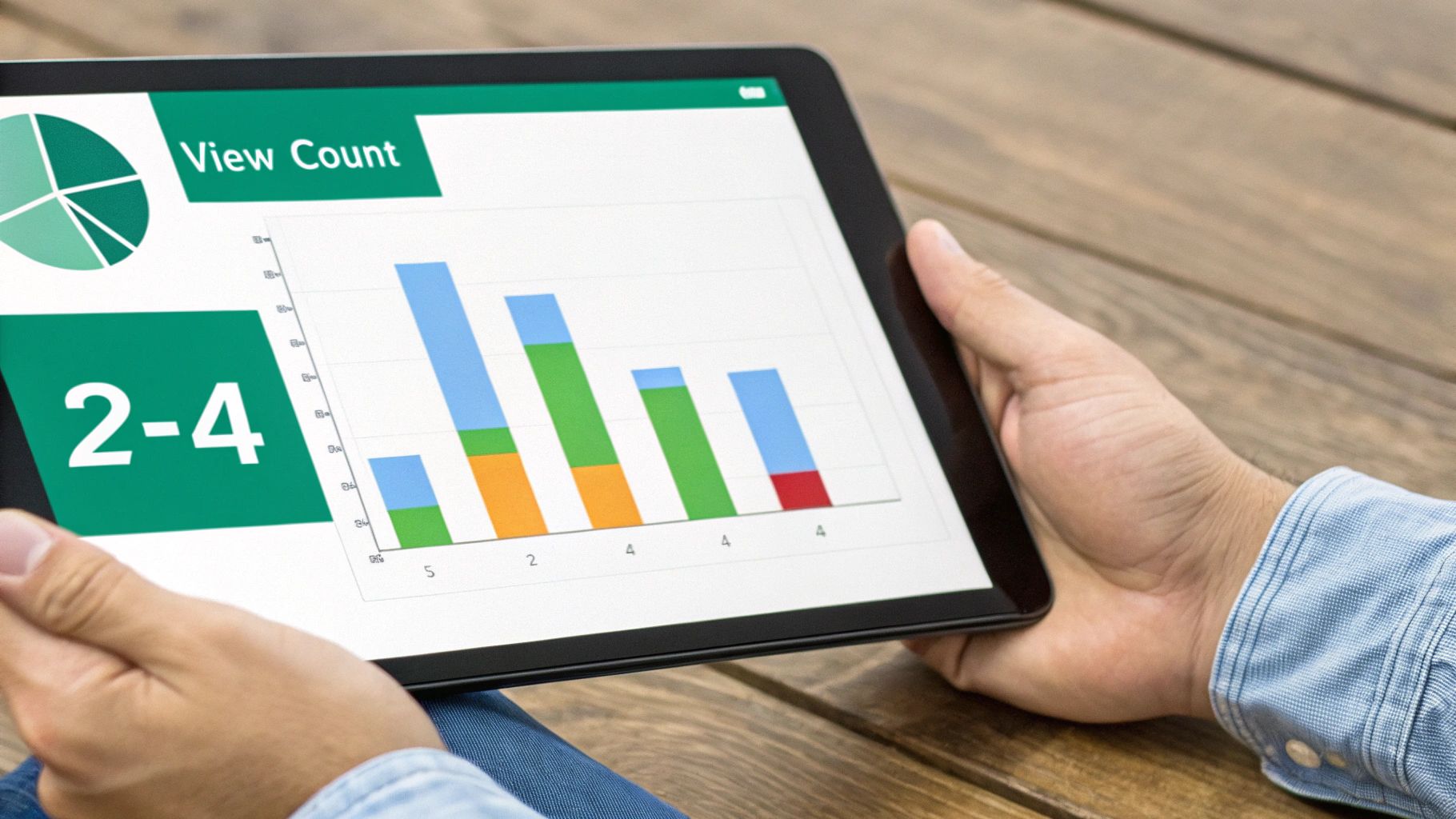
So, you know what impressions are. But why should you care about them? The real magic happens when you understand why this metric is a game-changer for your brand’s growth and overall health on social media.
Think of impressions as the first and most basic signal of your content's visibility. They tell you how well the social media algorithms are pushing your posts out into the world. After all, before someone can ever like, share, or buy from you, they have to see you first.
A high impression count is proof that you’re capturing eyeballs and staying on your audience's radar. This consistent exposure is vital for building brand recall. In a never-ending sea of content, just being seen over and over again helps etch your brand into a user's memory, making them far more likely to think of you when they're ready to make a move.
Using Impressions as a Diagnostic Tool
Impressions aren't just a number to brag about—they're a powerful diagnostic tool for your entire content strategy. When you look at impressions next to other metrics, you start to see the full story of what's working and what’s falling flat.
For instance, what if a post gets tons of impressions but almost no clicks or shares? That’s a classic sign of a disconnect. It means people are scrolling past your content, but it's not compelling enough to make them stop and act. This might signal a few issues:
Weak Headlines or Hooks: Your opening just isn't grabbing anyone.
Dull Visuals: Your images or videos are failing the "scroll-stop" test.
Audience Mismatch: The algorithm is serving your content to the wrong crowd.
Spotting this gap is your chance to pivot. You can refine your headlines, switch up your visuals, and sharpen your targeting. To get the full context, it helps to review the essential social media engagement metrics and see how impressions play a part in the larger ecosystem.
> High impressions show the algorithm likes you. High engagement shows your audience likes you. You need both to truly succeed.
Learning to read this data correctly is the key to getting the most out of your social media efforts. You can dig deeper into turning these numbers into real-world wins by exploring guides on https://www.gainsty.com/blog/social-media-roi-measurement. At the end of the day, tracking impressions is fundamental to building brand awareness that sticks.
How Impressions Behave Across Different Social Platforms
An impression on one platform is not the same as an impression on another. The way these platforms are built, from their algorithms to how people use them, completely changes the meaning and volume of the impressions you get. This is something you have to grasp to make sense of your data.
Think about it this way: what counts as a huge win on one channel might just be par for the course on another. Without understanding the specific environment of each platform, you're flying blind. Context is everything.
Take TikTok, for instance. The entire platform is engineered for virality. Its algorithm can take a single video and blast it to millions of feeds overnight, racking up an unbelievable number of impressions. Here, impressions are plentiful, but a viral impression is the real prize.
Platform-Specific Impression Trends
On the other hand, you have a platform like Facebook. For years, we’ve watched the organic reach for business pages slowly shrink. This makes each organic impression you do earn feel more valuable. It’s a sign your content fought its way through a crowded, competitive feed and won.
The latest numbers paint a really clear picture of these differences. Looking at 2024 and 2025 data, TikTok dominated with an average of 6,268 impressions per post. Instagram saw a healthy 13% year-over-year jump to 2,635 impressions, while Facebook’s average plummeted by 35% to just 1,116. Meanwhile, X (formerly Twitter) pulled off an impressive comeback, tripling its average to 1,425 impressions per post. If you're a data nerd, you can dig into more social media performance on Socialinsider.io.
> An impression on X, driven by real-time conversations, behaves differently than an impression on an Instagram Story, which is temporary and intimate. Understanding this nuance helps you set realistic goals for each channel.
This is exactly why you can't just copy and paste the same content across all your social media channels and expect it to work. You've got to tailor your strategy to the playground you're in. For a deeper dive on this, our ultimate guide on social media growth strategies is a great resource for customizing your tactics.
A few key examples:
Instagram: Impressions are fragmented. You have Reels, Stories, and traditional feed posts, and each one has its audience and plays by its own rules.
X (Twitter): Its feed is a fast-moving river of information. Your content can get a massive spike in impressions in minutes if it ties into a live event or a trending hashtag.
Getting familiar with how impressions work on each platform is the key to interpreting your analytics correctly and building a strategy that gets results.
When you dig into your social media reports, you'll notice impressions aren't just one big number. They’re split into two distinct types: organic and paid. Knowing the difference is key to building a smart, well-rounded content strategy.
Understanding Your Paid and Organic Impressions
Organic impressions are the views you earn, not buy. They happen when someone sees your post because your followers shared it, the platform's algorithm featured it, or it popped up in a hashtag search. Think of it as word-of-mouth in the digital world; it's a direct reflection of how good and relevant your content is.
Paid impressions, on the other hand, are the views you pay for. You’re essentially buying guaranteed screen time in front of a specific audience through ads. This is your go-to method when you need to speed things up, like for a product launch, a big promotion, or reaching a whole new customer base.
Paid Impressions and Measuring Cost
Once you start putting money behind your content, you need to know if it’s paying off. That’s where Cost Per Mille (CPM) comes in. It’s a simple metric that tells you the cost for every 1,000 impressions your ad receives, making it easy to compare the cost-effectiveness of different campaigns.
The investment here is significant. Globally, marketers spend an average of US$46.47 per social media user. While the average CPM on social media dipped slightly to US$5.69 in late 2024, the total volume of ad impressions jumped by about 4%.
> Organic impressions are your foundation, proving your content connects with a real community. Paid impressions are the rocket fuel you use for specific goals, like driving sales or making a big announcement.
A solid strategy needs both. To make sure you’ve got all your bases covered, our social media marketing checklist is a great resource. By blending earned and paid visibility, your brand gets the best of both worlds: authentic connection and strategic growth.
Got Questions About Social Media Impressions? Let's Clear Them Up.
Once you start digging into your social media analytics, the questions always start popping up. It's one thing to know what an impression is, but it's a whole different ball game when you see the numbers in your reports.
Let's tackle some of the most common questions that come up. Getting these sorted will help you move from simply knowing the terms to using the data to make smarter decisions.
Wait, Can I Have More Impressions Than Followers?
Yes, you absolutely can! You should. When your impressions are higher than your follower count, it's usually a great sign that your content is hitting the mark and reaching beyond your existing audience.
Think about it—your posts don't just live in a bubble with your followers. They get pushed out to a much wider world through a few key ways:
Shares and Retweets: When someone shares your post, all of their followers see it. That one action can put your content in front of hundreds or thousands of new people.
The Algorithm at Work: Platforms like Instagram and TikTok want to keep users scrolling. Their algorithms are constantly looking for great content to show people, even if they don't follow the creator. A single great post can get picked up and shown to a massive audience.
Hashtag Exploration: People actively search and follow hashtags they're interested in. Using the right hashtags places your content directly in front of an audience that's already looking for what you're offering.
Aren't Impressions Just a Vanity Metric?
This question comes up a lot, and the answer is a firm "no"—but with a big asterisk. On their own, impressions can feel like a vanity metric. A huge number doesn't automatically mean success. But when you look at them as part of the bigger picture, they're incredibly important for understanding the very top of your marketing funnel.
> Impressions are the foundation of your entire social media strategy. You can't get engagement, clicks, or sales if no one sees your content in the first place. Without that foundational visibility, nothing else can happen.
For instance, if you have high impressions but almost no engagement, that's a powerful clue. It tells you that people are seeing your content, but it's not compelling enough to make them stop and interact. This helps you diagnose if your headlines, visuals, or calls-to-action need a rethink.
So, How Do I Get More Impressions?
Boosting your impressions is all about making your content more discoverable and more appealing, both to people and to the platform's algorithm.
Start by posting consistently. This keeps your brand fresh in people's minds and signals to the algorithm that you're an active account worth promoting. Use a smart mix of hashtags, too—some broad and popular, some trending, and some super-specific to your niche.
Beyond that, focus on creating stuff that people genuinely want to share. Is it funny? Is it incredibly helpful or educational? Does it strike an emotional chord? Content that makes people feel something is content that gets shared, which is the fastest way to multiply your impressions organically. And don't forget to engage back! Replying to comments shows the algorithm that your account is a hub of activity, which can lead to a nice visibility boost.
Ready to turn those impressions into a loyal following on Instagram? Gainsty uses advanced AI and expert strategy to grow your audience with real, organic followers. Stop guessing and start growing. Get your viral growth plan today
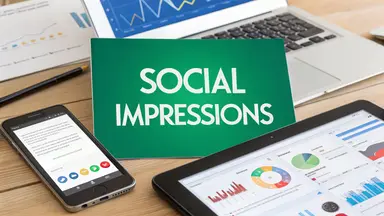
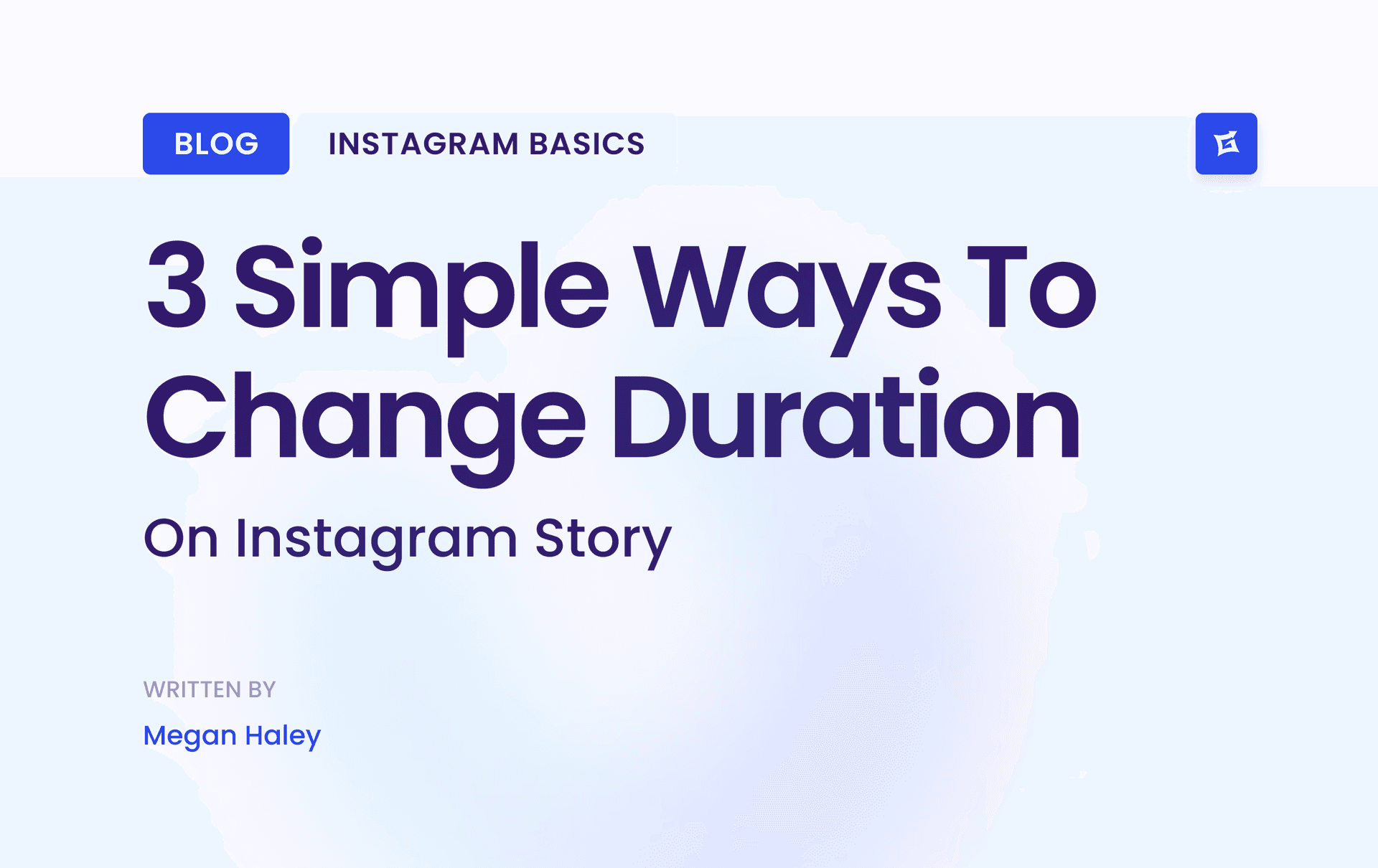
.png&w=1920&q=75&dpl=dpl_9XSWKBjhcBN6v6b1SN7m3p1WWjfr)
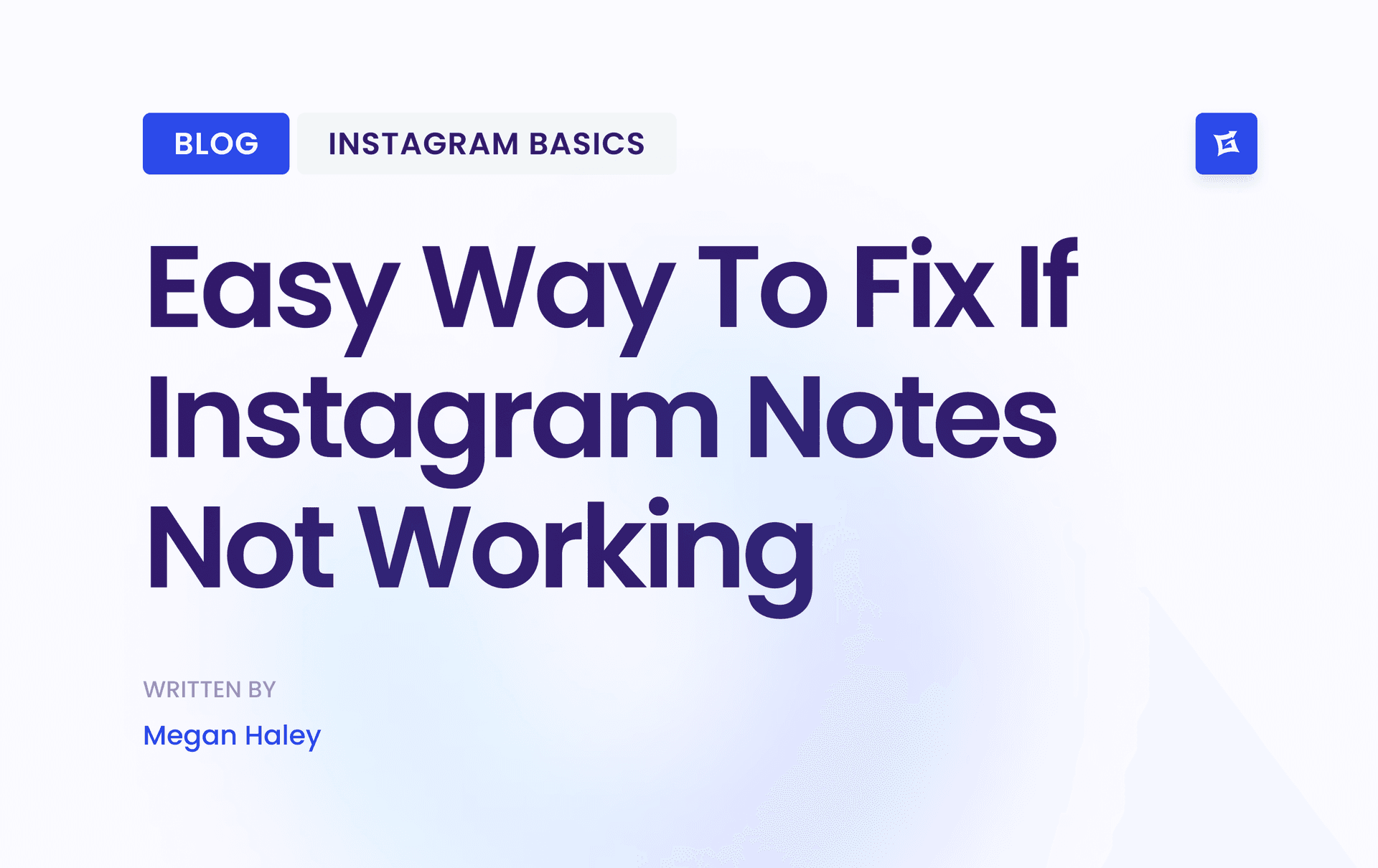
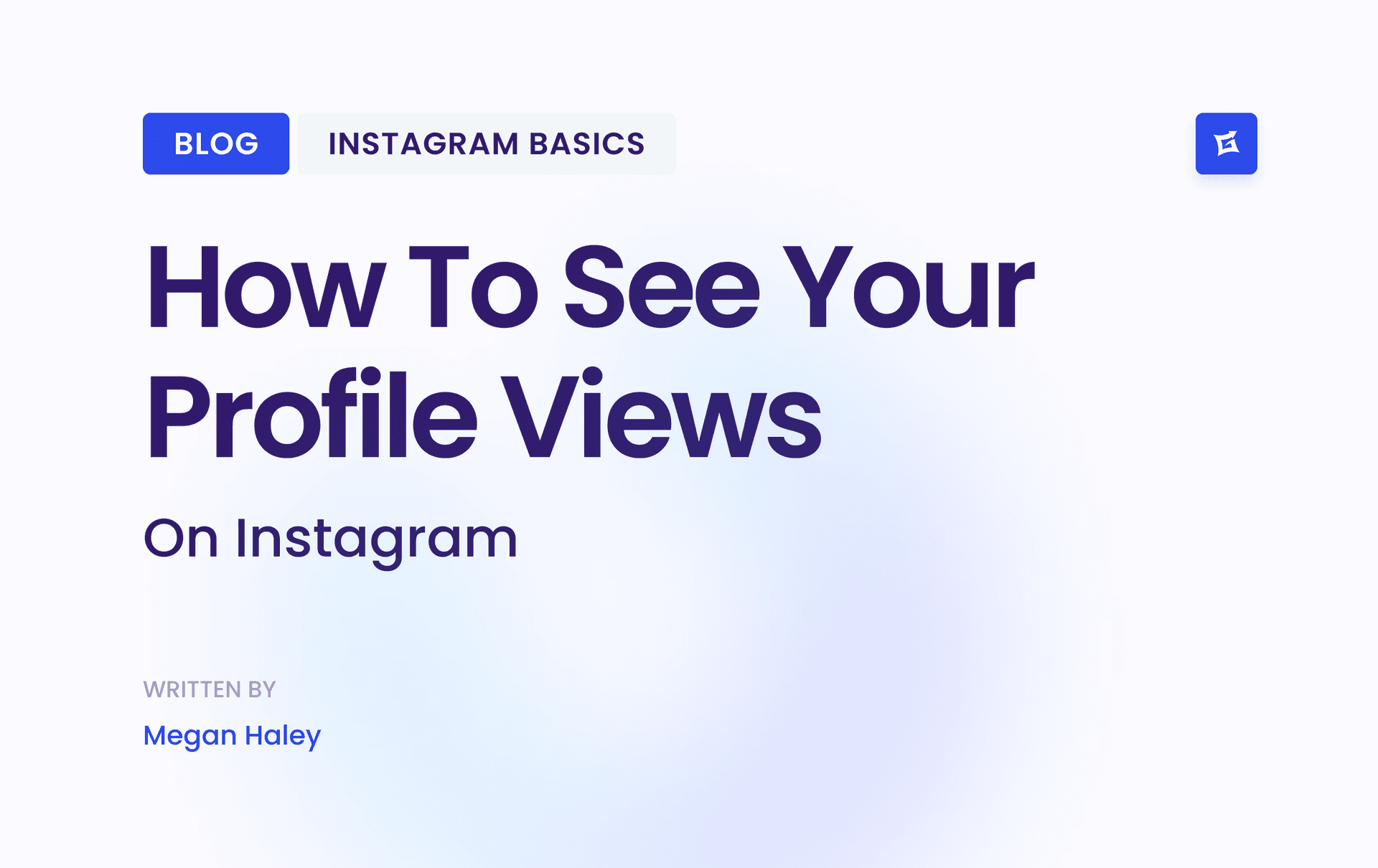
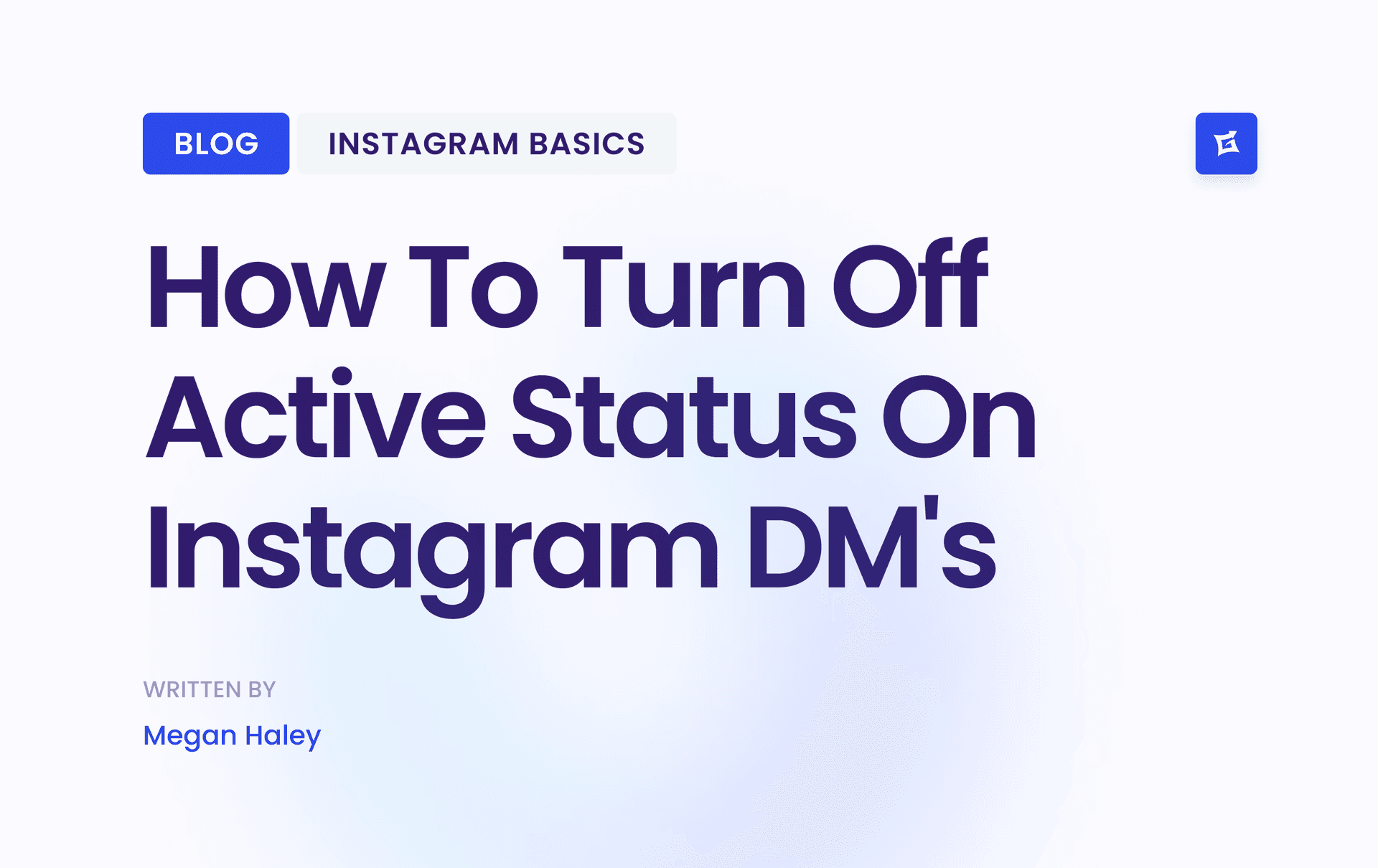
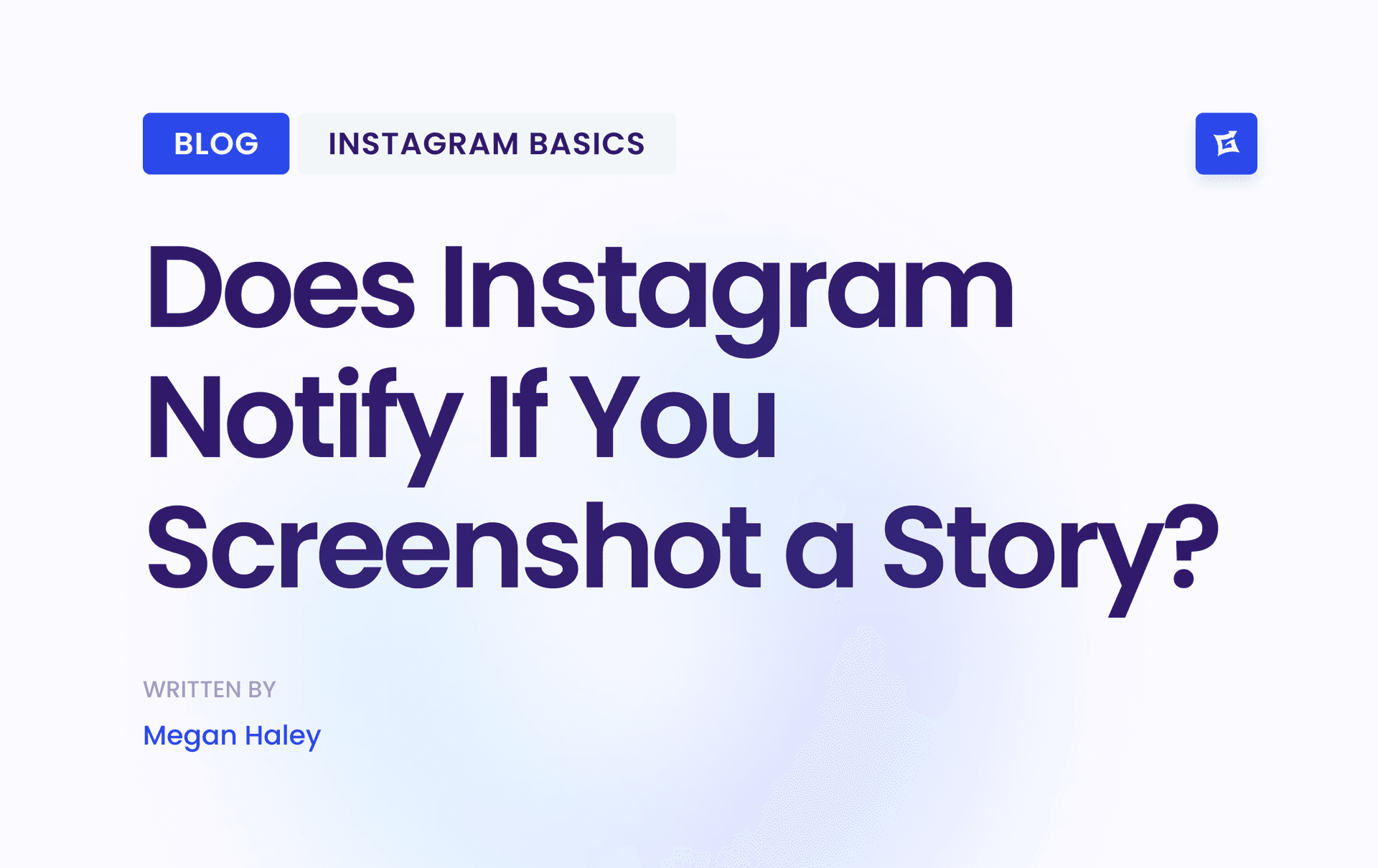


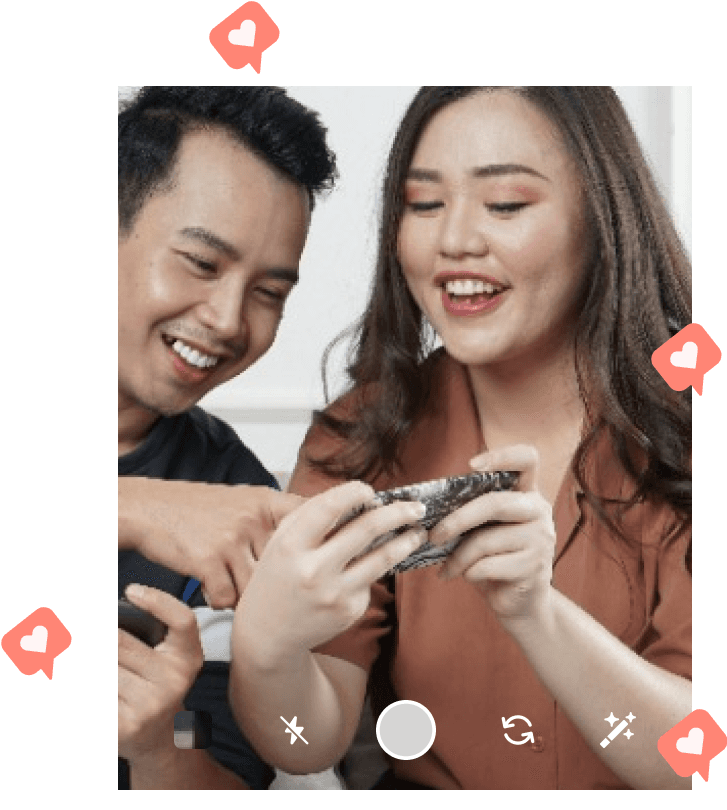
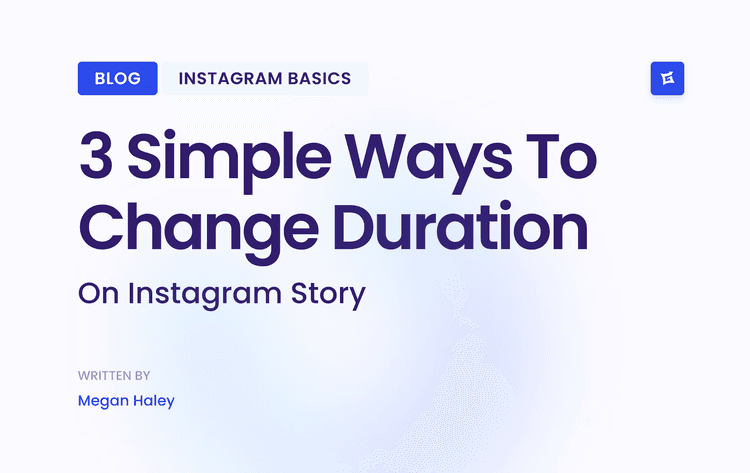
.png&w=750&q=75&dpl=dpl_9XSWKBjhcBN6v6b1SN7m3p1WWjfr)
